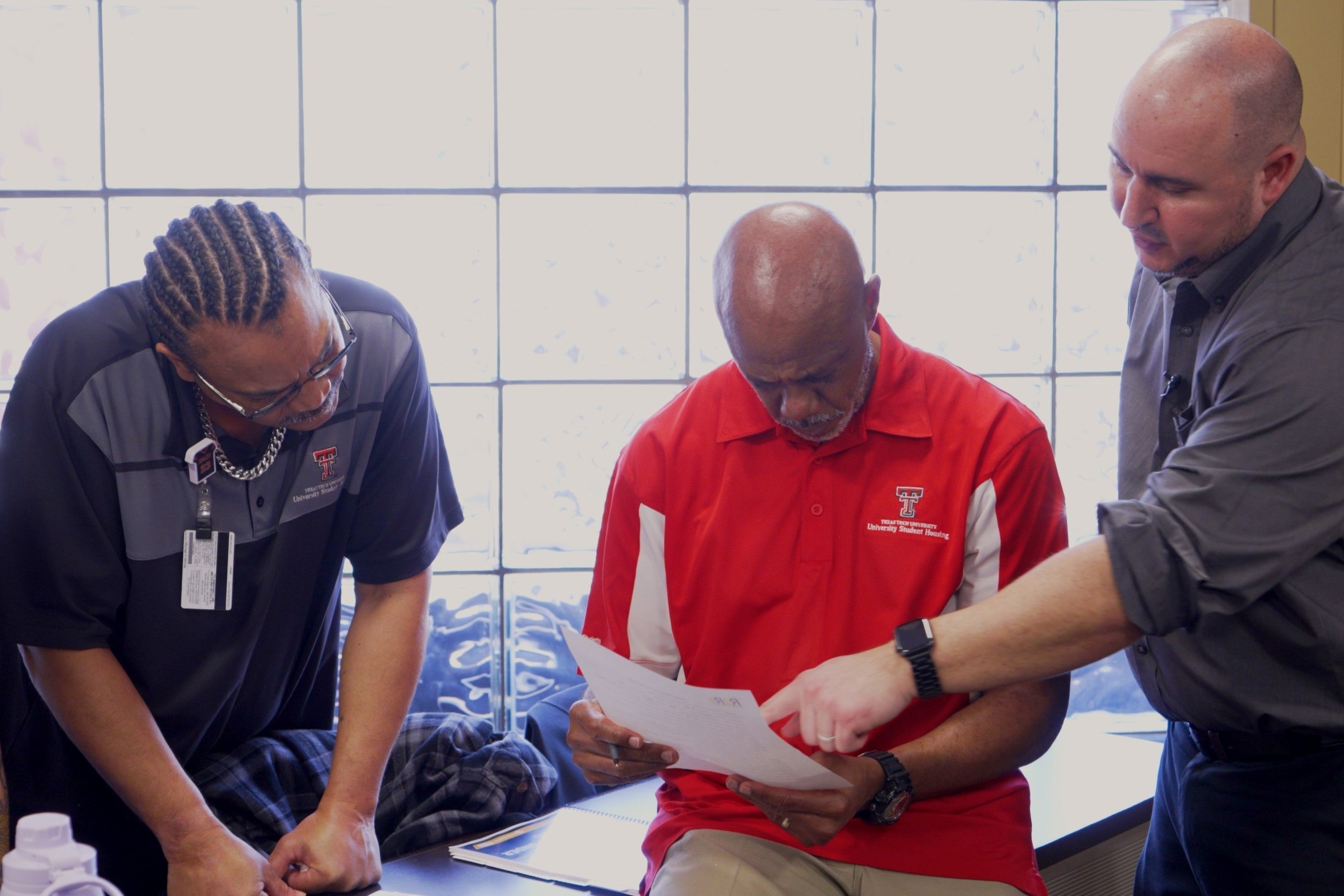At Texas Tech University (TTU), facilities leaders in the University Student Housing department knew their water damage response could be improved — but it wasn’t until they took a closer look that they realized how much room there was to grow.
“We know floods will inevitably happen,” said Tanya Massey, Senior Managing Director at TTU University Student Housing. “Old pipes, bad weather, student behavior — they all combine to give facilities staff a lot of heartache.”
Like many universities, Texas Tech had no commercial drying equipment, with minimal plans and training for staff. Their go-to tools for water events were floor cleaning machines and carpet blowers. While their team worked hard to respond quickly, they lacked the resources, training and strategy to respond effectively.
The department’s approach shifted after partnering with the Ready 2 Respond™ (R2R) Program.
Starting with an Honest Assessment
The idea of an outside assessment initially raised questions. “When we first talked about the assessment, it seemed kind of scary,” Massey said. “What’s this going to look like? How bad is it going to look for us? But if your staff goes into it with eyes wide open and understanding that this is to help us improve and serve our students – it’s a positive process.”
Massey noted that the process was collaborative from the start. During a two-and-a-half-day site visit, the R2R team walked through key facilities and met with team members. Next, the R2R team followed up several weeks later with a detailed readiness report highlighting opportunities to improve response time, reduce costs, and prevent recurring damage.
Team Training that Builds Buy-In
After reviewing the assessment, TTU’s facilities leaders decided to adopt the R2R program, which includes response planning, equipment guidance, and on-site training.
One concern? Getting staff buy-in. “Our facility staff is used to being out in the field — not sitting behind a desk or in a training room for six hours,” said Drew Jahr, Senior Associate Managing Director at University Student Housing Facilities Services. “But this was magical to see – they truly bought into it and enjoyed both the classroom training component and using the equipment to take care of a mock flood event.”
The training also helped the team recognize the need for additional equipment. “Once we learned how to calculate what is needed based on the square footage of the affected area, we realized what we had wasn’t enough,” Jahr said.
Immediate Use – and a New Mindset
Not long after completing training, TTU faced a significant water event on campus. This time, they were ready. The trained team deployed the new equipment and responded immediately — reducing downtime and limiting damage.
“This really changed us to a culture where now we’re equipped to take care of things,” Jahr said. “When you’re talking $10,000–15,000 per flood, do the math, and the return on investment is clear.”
Massey noted that one of the most valuable shifts has been the cultural impact on the team. “I trust my team more than an outside vendor,” she says. “Being able to respond on campus with our own team is a phenomenal use of our resources.”
Looking Ahead
TTU plans to continue expanding its emergency preparedness efforts, with a follow-up assessment on the horizon and additional equipment and training to support campus-wide response.
Massey said her advice to other institutions is not to wait. “Don’t be afraid of the assessment because it will reveal your vulnerabilities,” she said. “Start with a conversation. Learn where your gaps are and what you can do to fill them. Ultimately, this is helping us improve and to serve our students better.”
The R2R team can help assess your facility's readiness and develop a comprehensive response plan. For facility management tips, follow us on LinkedIn and subscribe to our Facility Insights newsletter.


The Undeniable Value of Taking Control of Water Events
Enhance Your Facility's Air Quality